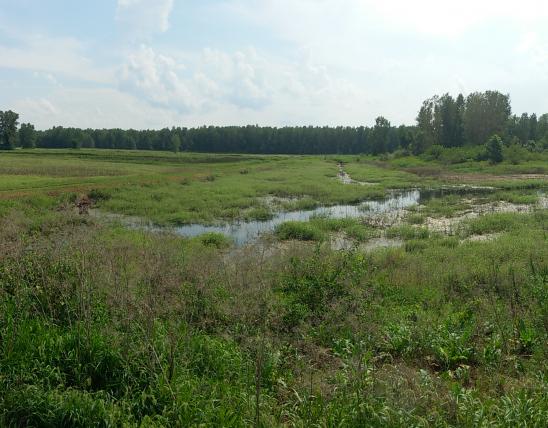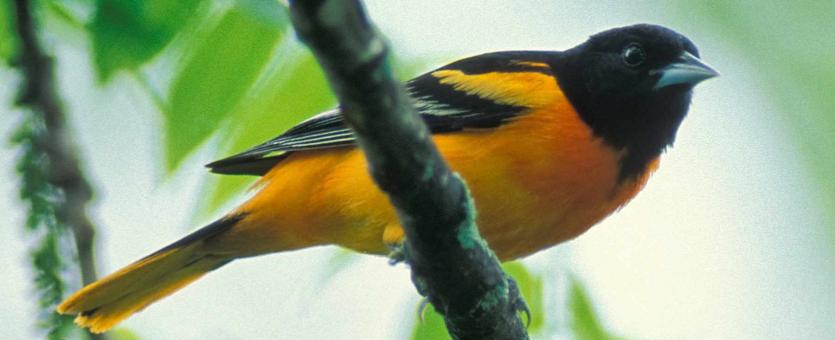
With the Baltimore oriole, you usually hear the male's loud, flutelike whistle before you see the bird. Adult male upperparts are black, with orange shoulders, lower back, rump, and part of the outer tail feathers. Underparts are bright orange, with a black throat and upper breast. Upperparts of female are olive brown above, with dark streaks and bars on the head and back. Underparts are dull orange yellow with some dark mottling on the throat. First-year males may lack or have only partially black hoods. The voice is a clear, whistled series of musical notes that usually contain the whistled call "tchew lee."
Similar species: A western bird, Bullock's oriole (Icterus bullockii), used to be grouped with the Baltimore oriole as the same species, the "northern oriole." Now scientists consider them two different species. Bullock's/Baltimore hybrids, or Bullock's orioles themselves, may occasionally appear in our state.
Length: 8¾ inches (tip of bill to tip of tail).
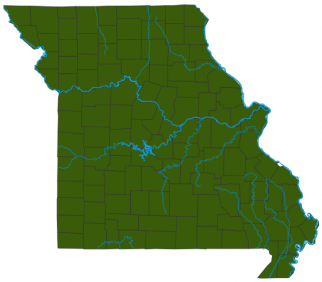
Statewide.
Habitat and Conservation
Usually seen foraging in trees in open areas, such as those in parks, backyards, farms, woodlands, and along riverfront forests. As with all migrating birds, this species requires appropriate habitat in both summer (nesting) territories and wintering grounds—as well as all the lands they migrate over.
Food
Baltimore orioles feed in trees, searching for caterpillars, beetles, fruit, and flower nectar. Orioles come to nectar feeders and will consume the pulp of oranges cut in half. During winter (when the orioles are in Central America), they drink mostly nectar from flowers.
Status
Uncommon summer resident. You may see this bird listed in some field guides as the "northern oriole," because taxonomists had, for a time, considered the Baltimore oriole (of the eastern US) and the very similar Bullock's oriole (of the west) as merely two "forms" or "races" of the same species, and grouped both together under the name "northern oriole."
Life Cycle
Finding an oriole's nest in summer isn't easy. Hidden in the upper branches of a tall maple or elm, the nest looks like a gray basket, woven of milkweed silk, plant fibers, and hair. Baltimore orioles nest throughout the eastern U.S. and into Canada, then migrate south for winter. Wintering habitat includes scattered trees and woodland borders from Mexico to Colombia and Venezuela.
Human Connections
There are few people who don't get excited when they catch a glimpse of a bright orange male Baltimore oriole as it dodges among the high boughs of a tree, singing its haunting, flutelike songs. The uncommonness of this species adds to the thrill.
Ecosystem Connections
As an eater of plant material and of insects, and as a species preyed upon by other animals, this omnivorous songbird influences the habitats of all the places it migrates through, from Canada to Central America.
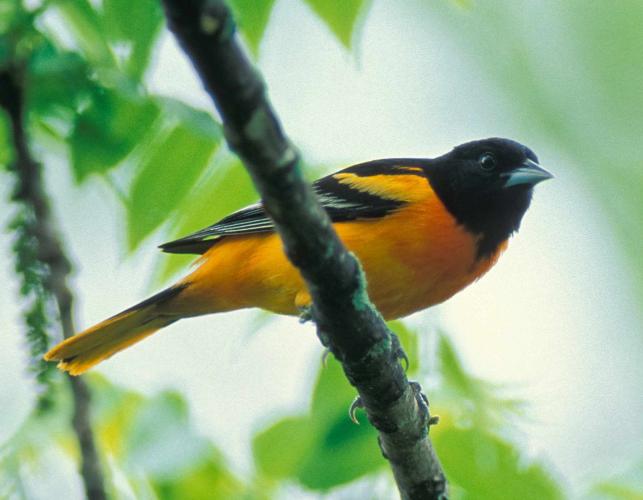
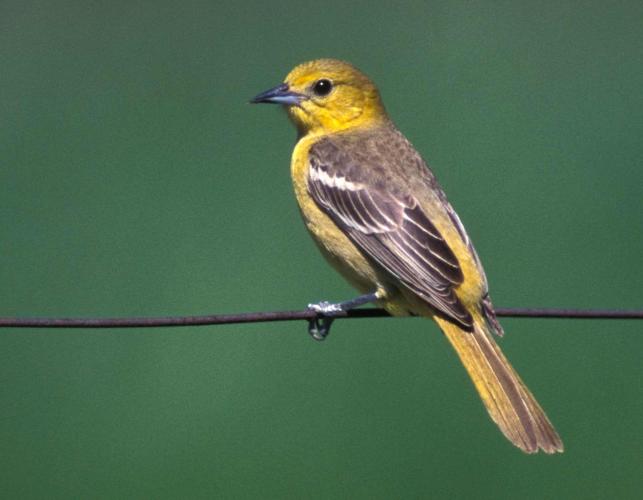
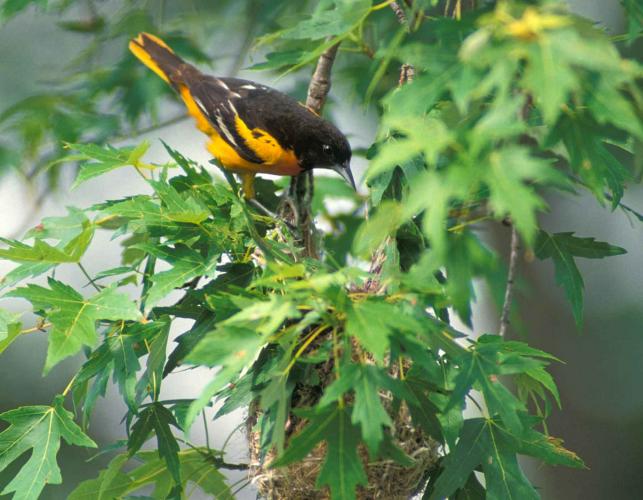
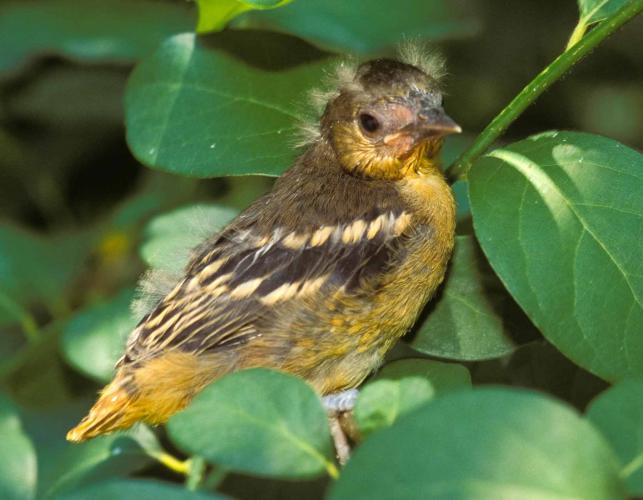

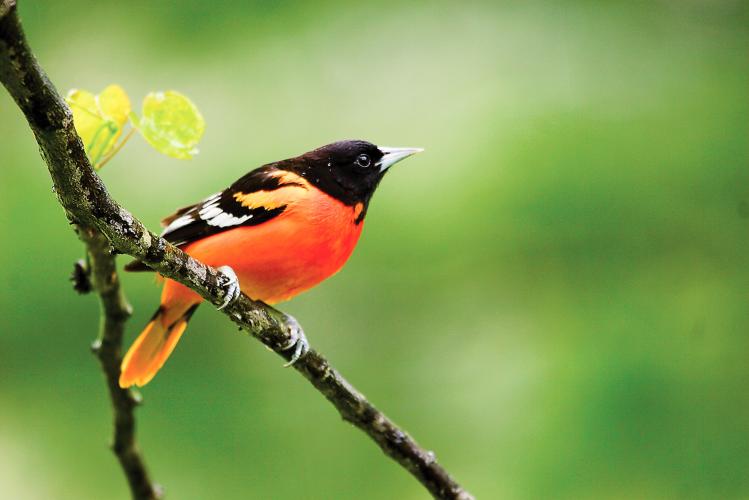
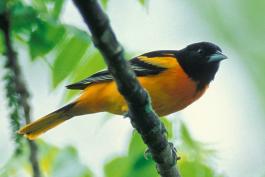
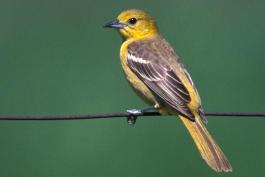
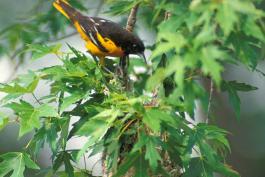
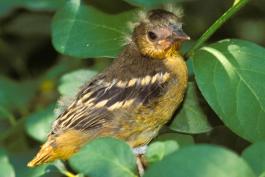
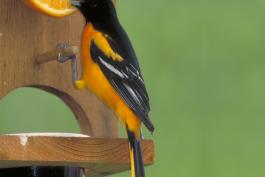
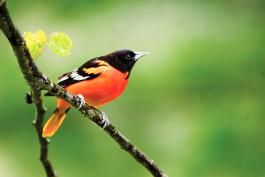
Where to See Species
About 350 species of birds are likely to be seen in Missouri, though nearly 400 have been recorded within our borders. Most people know a bird when they see one — it has feathers, wings, and a bill. Birds are warm-blooded, and most species can fly. Many migrate hundreds or thousands of miles. Birds lay hard-shelled eggs (often in a nest), and the parents care for the young. Many communicate with songs and calls.






















